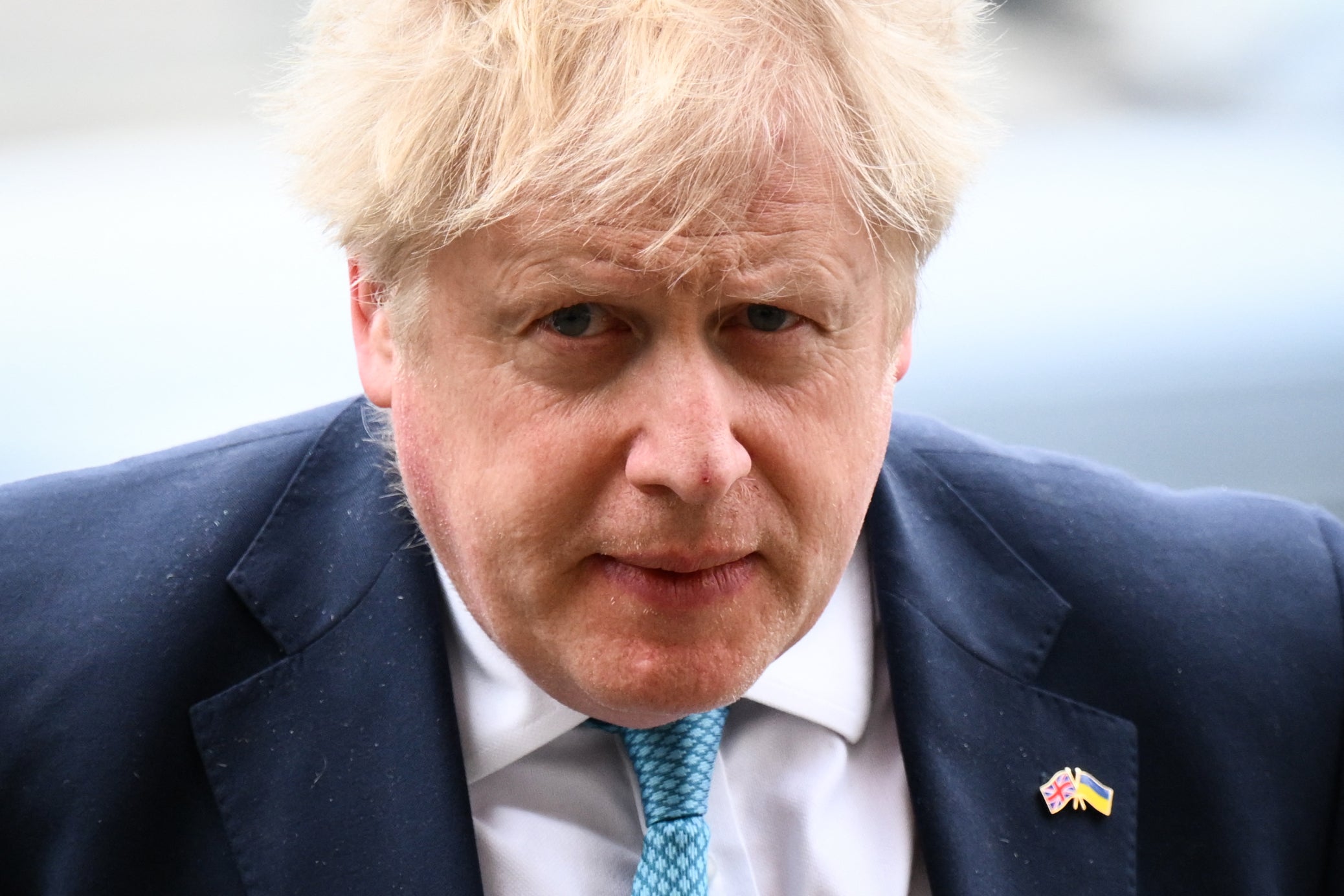I blame record-high immigration on one man – Boris Johnson
Having campaigned for a Leave vote, the former PM believed in controlling migration, rather than reducing it, writes Sunder Katwala. It was a classic case of trying to have his cake and eat it


Another set of record net migration figures – with 672,000 more people arriving than leaving the UK in the 12 months to June 2023 – is causing political headaches for Rishi Sunak.
Why is immigration so high? The new figures continue to be boosted by exceptional events and flows in 2022. The ONS calculate that net migration peaked at a record level of 745,000 in the year to December 2022 due to people coming from Ukraine and Hong Kong. But the main reason that immigration has risen rather than fallen during this parliament are the political and policy choices made by Boris Johnson’s government to liberalise non-EU immigration after Brexit.
So these net migration figures are the immigration consequences of Boris Johnson’s choices.
Having campaigned for a Leave vote, Johnson believed in controlling migration, rather than reducing it. He ditched Theresa May’s goal to get net migration down below 100,000 a year – a target that had always been missed – and spoke of making post-Brexit Britain “a giant magnet” for scientists, and for students to stay and work when they graduate. On the specific choices made by the Johnson government, there was a significant degree of both political and public consensus.
But there was also a contradiction. Just as the 2019 Conservative manifesto was going to print, a new line was added – that “overall numbers would fall”. Johnson reportedly told colleagues to ignore this, a classic case of trying to have his cake and eat it.
Yet much of the public recognises these dilemmas of immigration control. Around half of people want overall numbers to fall, while a third want large reductions. But most are selective in what to reduce. Only a quarter of people favoured reducing any of the flows that contribute most to the high numbers – whether asked about students or skilled workers, care workers or fruit pickers. Only a quarter of people actively want higher overall levels to go up still further, though most people do still want yet more visas to be available when the NHS wants to recruit doctors and nurses from overseas.
There are now three possible political responses to what the dilemmas of control mean for immigration numbers.
One would be to sincerely reduce immigration – by proposing a plan to deliver lower numbers. Cutting the numbers sharply and swiftly is the proposal of former Home Secretary Suella Braverman and the New Conservative group of 25 MPs on the right of the party. They have set out a 10-point plan to get numbers back down to the 2019 levels and deserve credit for taking the trade-offs seriously. What the New Conservative plan demonstrates is that there is no route to significantly lower numbers without cutting migration flows that are broadly popular, including the NHS and social care visas.
The second approach is “continuity cakeism” – promising lower numbers in principle but with exceptions in practice.
The Conservative backbenches want big rapid immediate cuts to immigration, bigger tax cuts and lower NHS waiting lists. This is cakeism too. It is contentious as to whether Jeremy Hunt had the fiscal “headroom” to offer tax cuts – but the OBR revising immigration numbers upwards was a big part of how he made his numbers add up. So the Sunak government will not try to rapidly halve net migration by the time of the next general election. That would be impossible in practice, while the effort would derail its efforts to meet its pledges on the NHS and the economy.
The third approach would be to accept high migration as a new norm in 2020s Britain and to focus on how to manage it better. Specific debates about who gets a visa and what that means would continue. But more focus on managing impacts fairly on public services, and having a housing programme to meet rising demand may be more constructive than promises to cut numbers that never happen and undermine public trust.
Both the OBR and Migration Observatory at the University of Oxford project long-term net migration trends returning closer to net 350,000 a year than current exceptional levels. But the sustained trend now seems likely to be above the net 250,000 average of the last two decades.
More immediately, the idea that the government can campaign on immigration at the general election lacks credibility. Immigration is a high priority for Conservative voters – and a much lower one for Labour supporters – but reminding voters of the government’s record may now repel as many votes as it attracts. Conservative voters are angry at broken promises, while opposition voters worry equally about the lack of compassion and control in the government’s asylum plans.
James Cleverly argued in 2019 that softening public attitudes after Brexit offered a healthier environment for the “long overdue, grown- up debate about our need and appetite for immigration.” Having become the home secretary last week, how far will he still see a chance to lead that debate now?
Sunder Katwala is director of British Future and the author of ‘How to Be a Patriot’ (Harper North)






Join our commenting forum
Join thought-provoking conversations, follow other Independent readers and see their replies
Comments